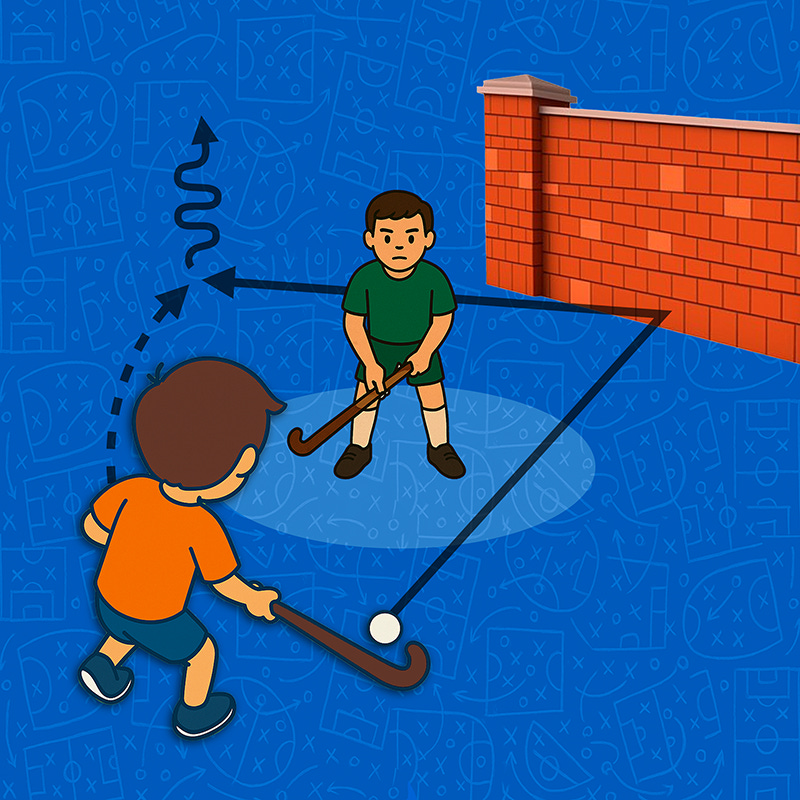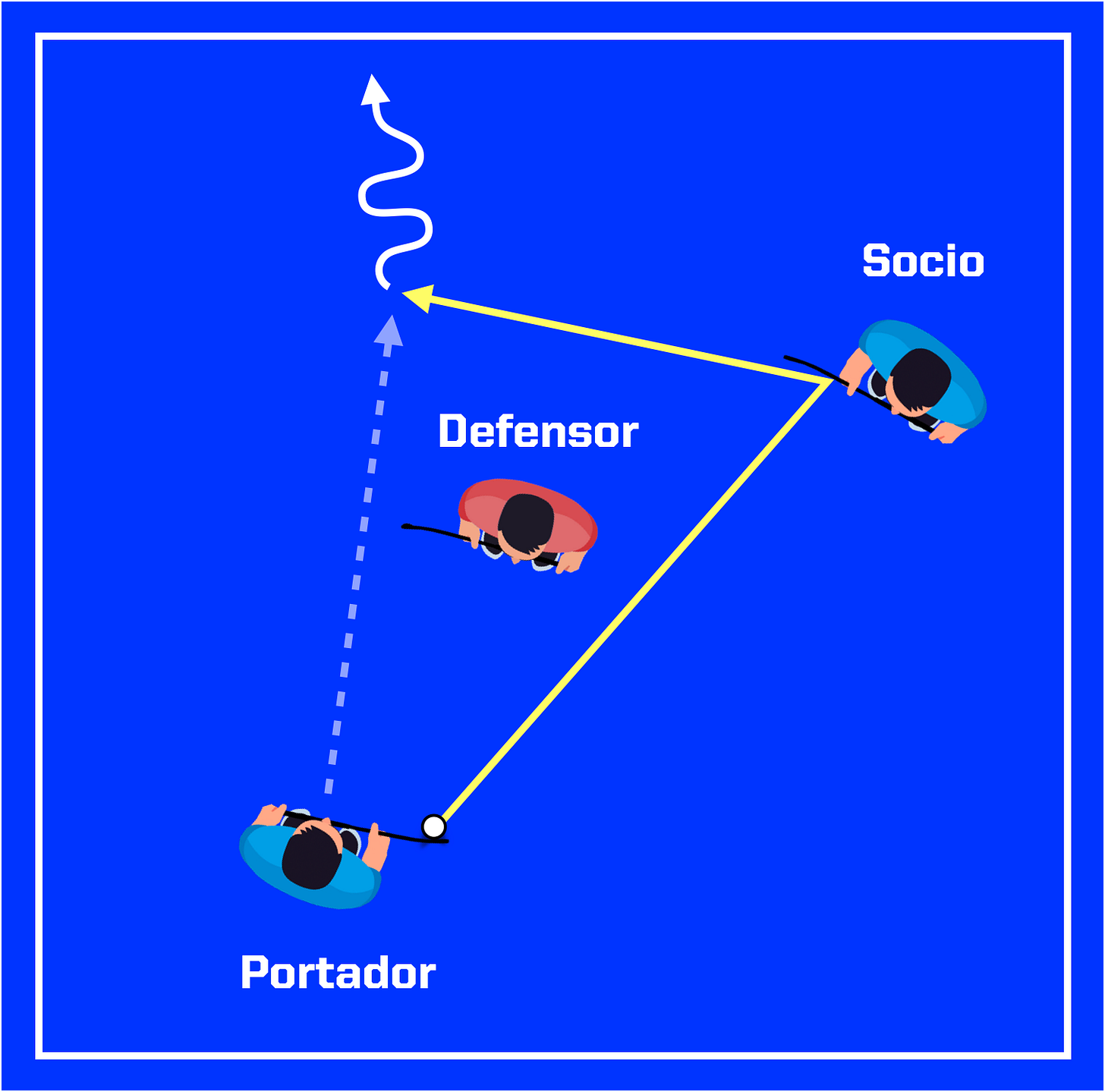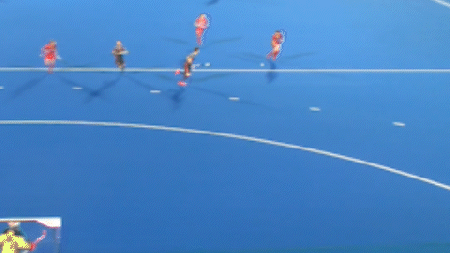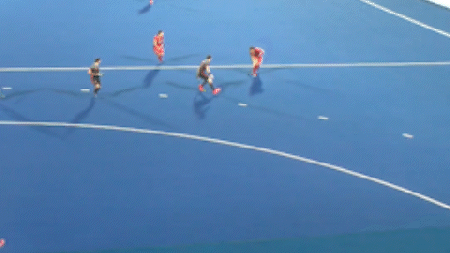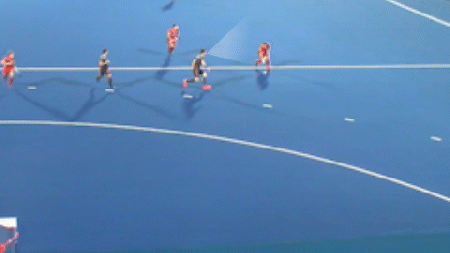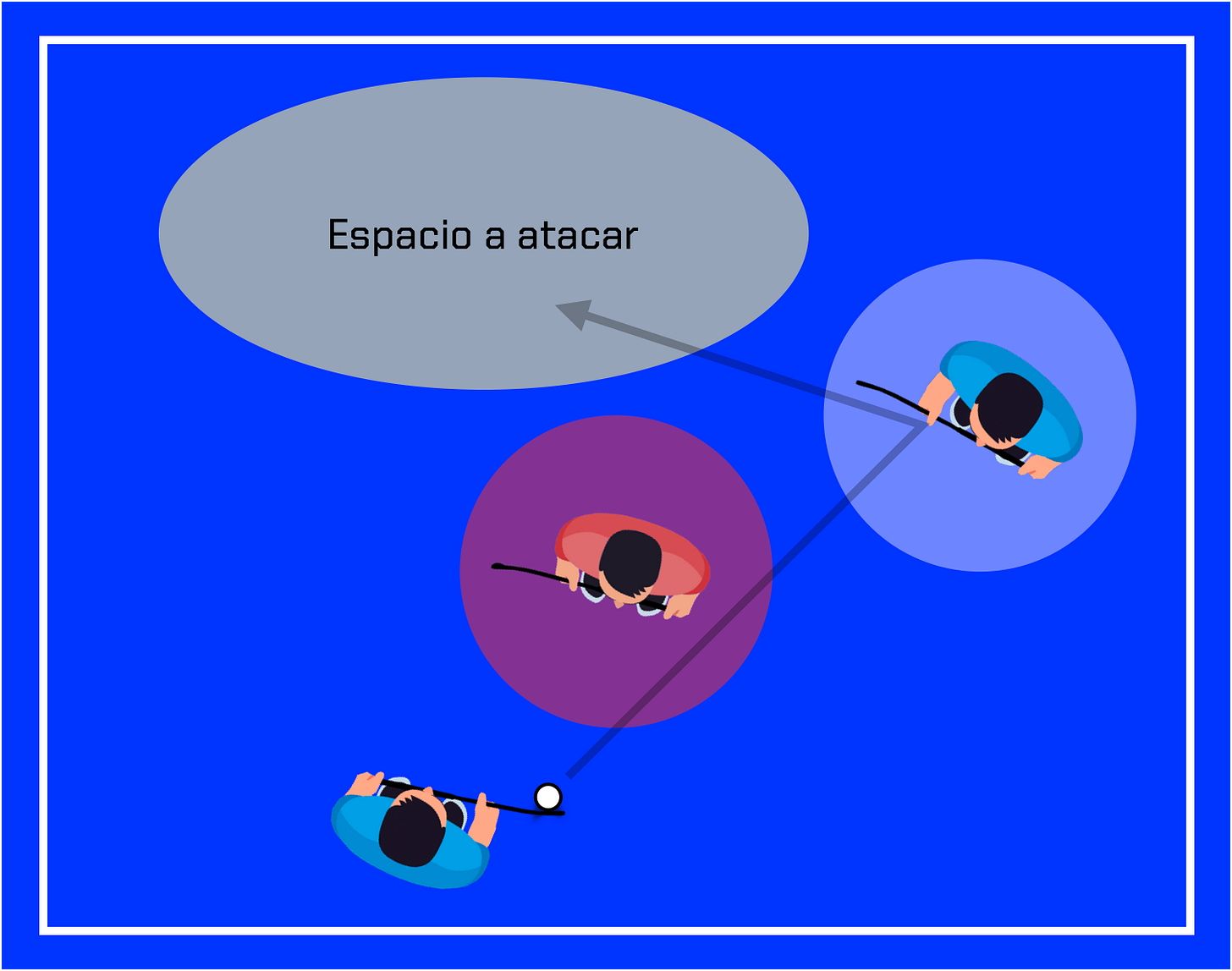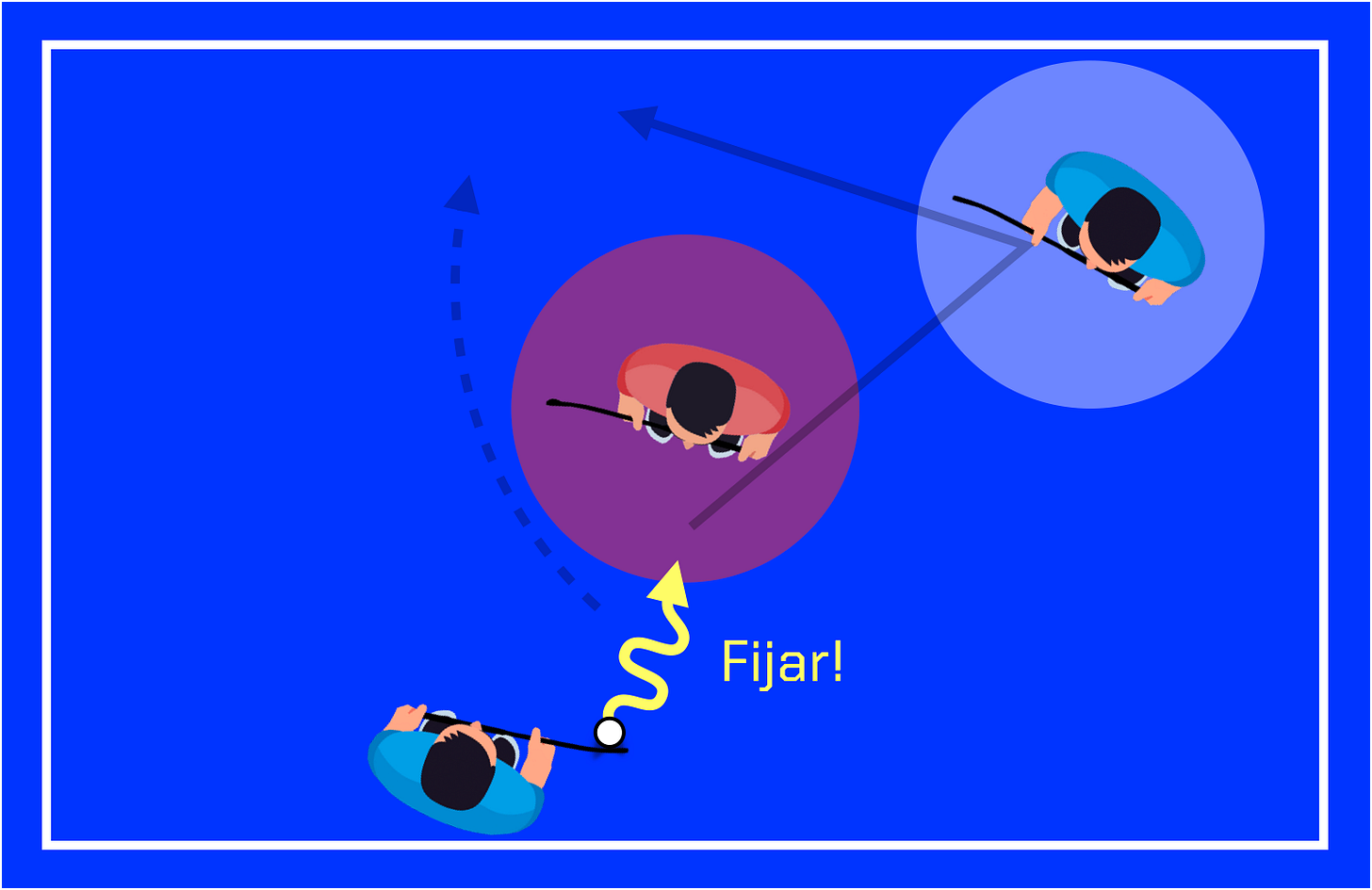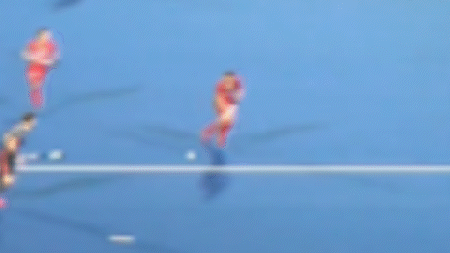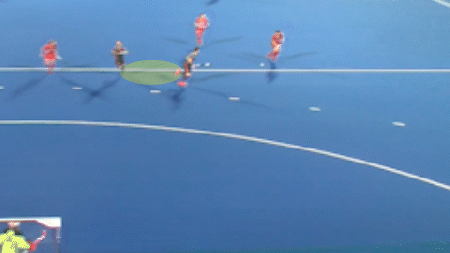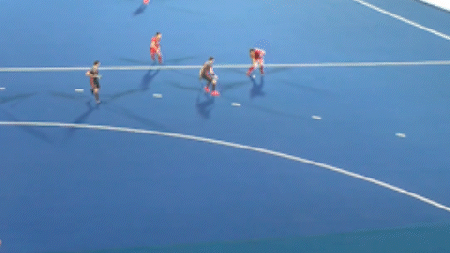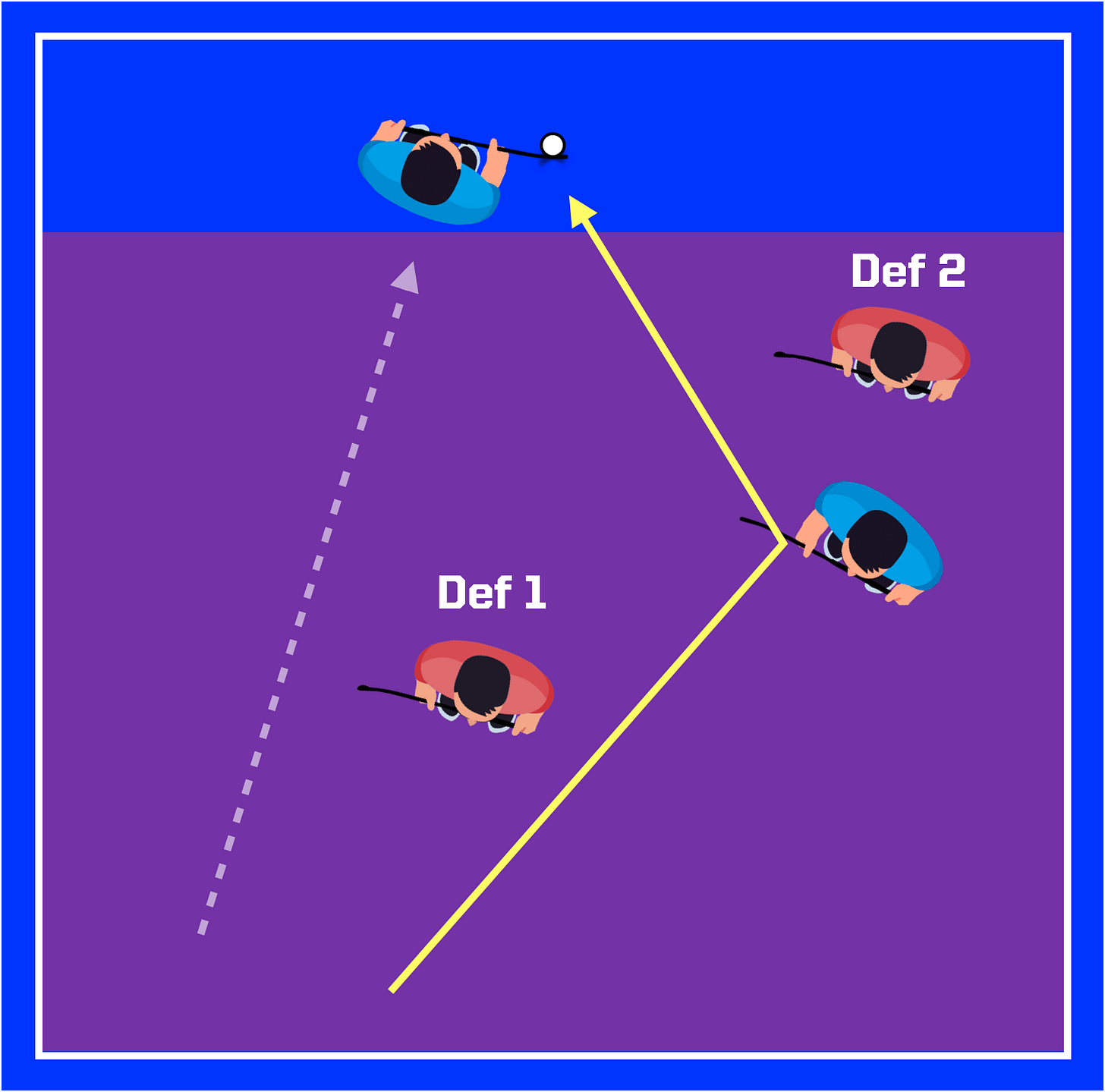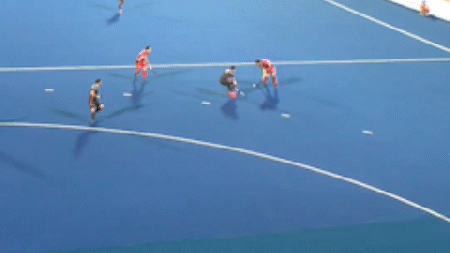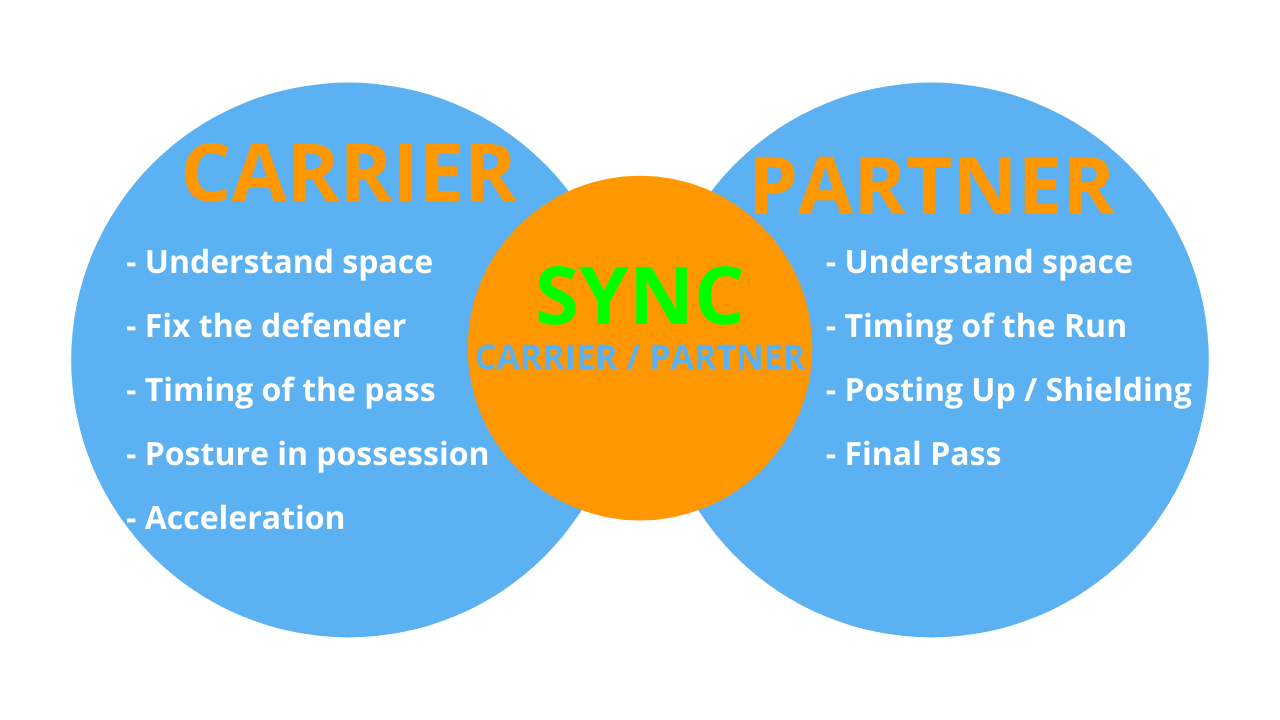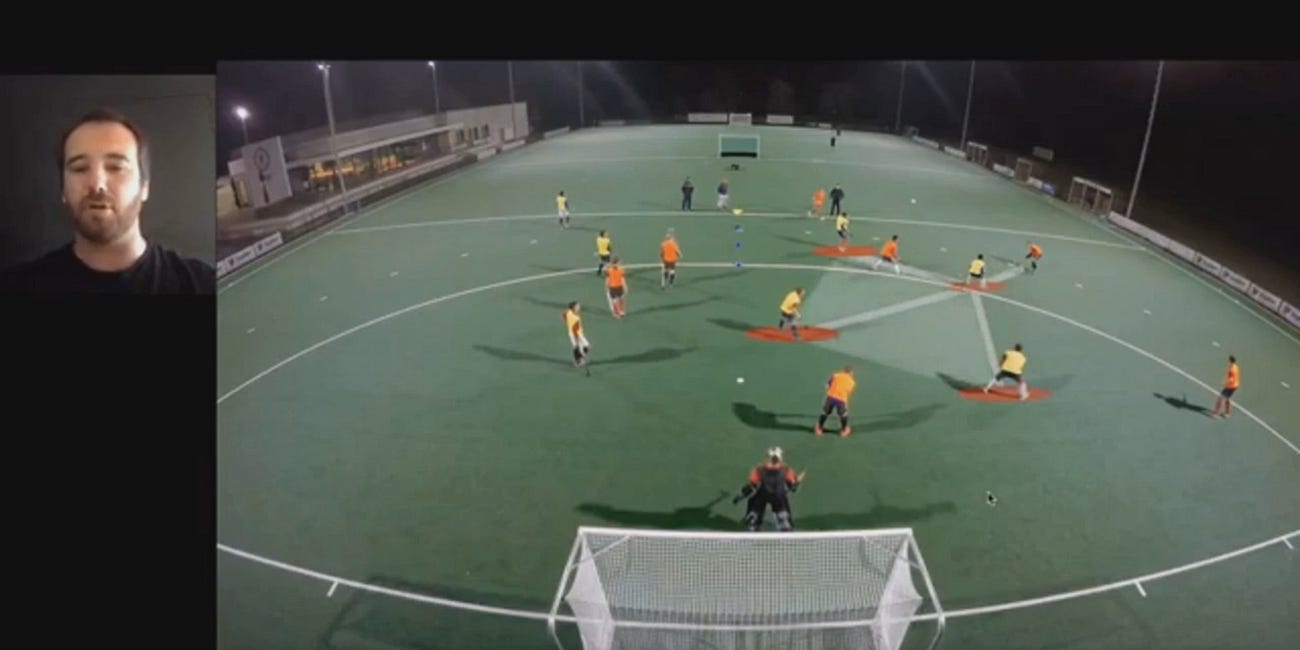No overload? Create it! Play a wall pass!
The wall pass, better known as the Give and Go in field hockey, is the perfect tool to break equality and create numerical superiority.
Earlier we talked about numerical superiority and how to play it effectively. If you haven't read this yet, you can find it here.
The reality is that there are few times when, in attack, we find a clear overload. It can only appear during some transitions, if the opponent is very poorly positioned... and that’s it.
Many times we will find ourselves in numerical equality. Our goal will be to play it well, to be able to generate superiority from there.
One of the great tools to generate superiority from equality is the wall pass.
🧱 What is "the wall pass"?
The wall pass, or "Give and Go," is one of the most effective elimination skills in modern hockey.
The player carrying the ball, when confronted by a defender, passes it to a teammate and accelerates to receive the return pass. In that unmarked run, their objective will be to receive the ball leaving their marker behind.
To facilitate communication from now on, we will refer to the Carrier (the one carrying the ball - Portador in the image), the Partner (the teammate with whom the wall pass is performed - Socio in the image), and the Defender (the opponent defending the action - Defensor in the image).
🎯 Why is the wall pass so effective?
There are two main reasons why, even though everyone is aware, it remains so efficient:
The carrier passes the ball and continues running in the same direction, while the defender must turn to run backward. This already creates an initial imbalance in favor of the attack.
In the vast majority of cases, the defender instinctively follows the ball with their eyes. Those milliseconds of distraction are enough for the carrier to accelerate and create more separation.
While these are the main reasons why the carrier has an advantage over the defender, that advantage will be completely lost if what comes next is not executed correctly and dynamically.
To ensure we take advantage of it, let's look at the key details in each role.
➡️ Key Details: Carrier
🔶 Understanding space
Knowing where the defender is, where my teammate is, and what space I want to attack to receive the return pass after the wall.
🏃🏻♂️➡️ Fixing the defender
A fundamental concept that comes from the 2v1. If I pass the ball from too far away, the defender has time to recover. It is necessary to dribble and get closer to fix them; this way, when I make the pass, they won't have enough time to catch me again.
⏳ Timing of the pass
Goes hand in hand with fixing the defender. You have to read the opponent's posture: ideally, we pass when they have their feet pointing towards us, so it takes them longer to turn. This, in my opinion, is the most important detail of all.
🏑 Posture when dribbling
If we talk about fixing the defender and timing the pass, the posture with which we carry the ball is also fundamental.
We must dribble it in a position that allows us to pass to any sector and always close to the stick, in a posture to execute at the exact moment.
In the wall pass, the window to make the pass lasts a second... and the next, the opportunity is already closed.
Sorry for the animation quality, it's the only way to include videos and keep it flowing.🏎️ Acceleration
It's not enough to accelerate after passing the ball; many times it's already too late. Ideally, the pass should be part of the acceleration, so the carrier gains even more speed while their marker is still reacting.
➡️ Key Details: Partner
🔶 Understanding space
For the partner, it's even more important than for the carrier. Their objective is to position themselves where they can receive, ideally behind the defender, in their blind side, and most of the time on their left foot, where it will be much harder to defend.
⏳ Timing of the unmarked run
Sometimes, the partner can simply be located in the correct space.
But if they are marked, they must actively make an unmarked run to reach that place without being anticipated.
The moment they do so will be decisive: they have to be available just when the carrier needs them.
🧱 Post or Protection?
In many cases, the partner returns the ball first-time: they literally act as a wall where the ball bounces. In hockey, we call this playing as a post.
But it's not always possible to do it this way. If the defender arrives very quickly or the passing lane is not clear, the partner must protect the ball for a few seconds until the carrier reaches the ideal position.
🏅 Winning pass
So far, we have only talked about the defender pressing the carrier. But in most situations, there is also a second defender, who marks the partner, the one causing the numerical equality.
That can complicate their action, but it doesn't change anything we said: the partner must still find the space, the moment, and the appropriate posture.
What will be decisive, however, is their return pass. Whether playing as a one-touch post or protecting, that pass must be a winning pass with respect to Defender 2.
That is to say: After their pass, the carrier must eliminate both defender 1 and defender 2.
This situation, many times, we can almost consider it as a new 2v1 against Defender 2.
With the concept of the 2v1 against Defender 2, it is also more justified why sometimes the partner does not play as a post and has to protect the ball to give the carrier time to break the line of defender 2.
🛜 Connection
Now that we've reviewed the key details of the carrier and the partner, it must be said: the hardest thing about the wall pass is not doing your part well, but having both do it well at the same time.
The pass, the unmarked run, the posture, the timing... All of that has to be synchronized for it to work.
And therein lies the true difficulty of this play: not in individual technique, but in the connection between two.
To conclude, here's a video with several examples:
Playing Playstation where the concepts are more than clear
A great goal by Wellen at Pinoke
A great Futsal goal
A beautiful example from basketball
A somewhat strange one from Waterpolo
One from a sport I love, Ultimate Frisbee (All man-to-man marking, look at the unmarked runs)
As you can see, the wall pass is present in almost all team sports.
And yes, it's a simple and effective tool for eliminating opponents. But it's also something more: a way to connect, to trust, to share with another.
Because in the end, a wall pass is not just a play... it's an agreement between two.
As always, if you liked it, share it in your coaches' groups!
Don't hesitate to reply with your opinions; your comments help me decide what to write about in the future!
Until next time,
Javi
Have you seen this masterclass by Javi?
The Role of the Defensive Diamond Structure in Field Hockey
The focus? “Defensive Diamonds”—the principles, strengths, and practicalities of the four-player diamond structure, especially when teams are most vulnerable: in transition and counter attack phases. Javier Telechea peels back not just the “how” but the “why,” giving us a framework that runs deeper than chalkboard sketches.




